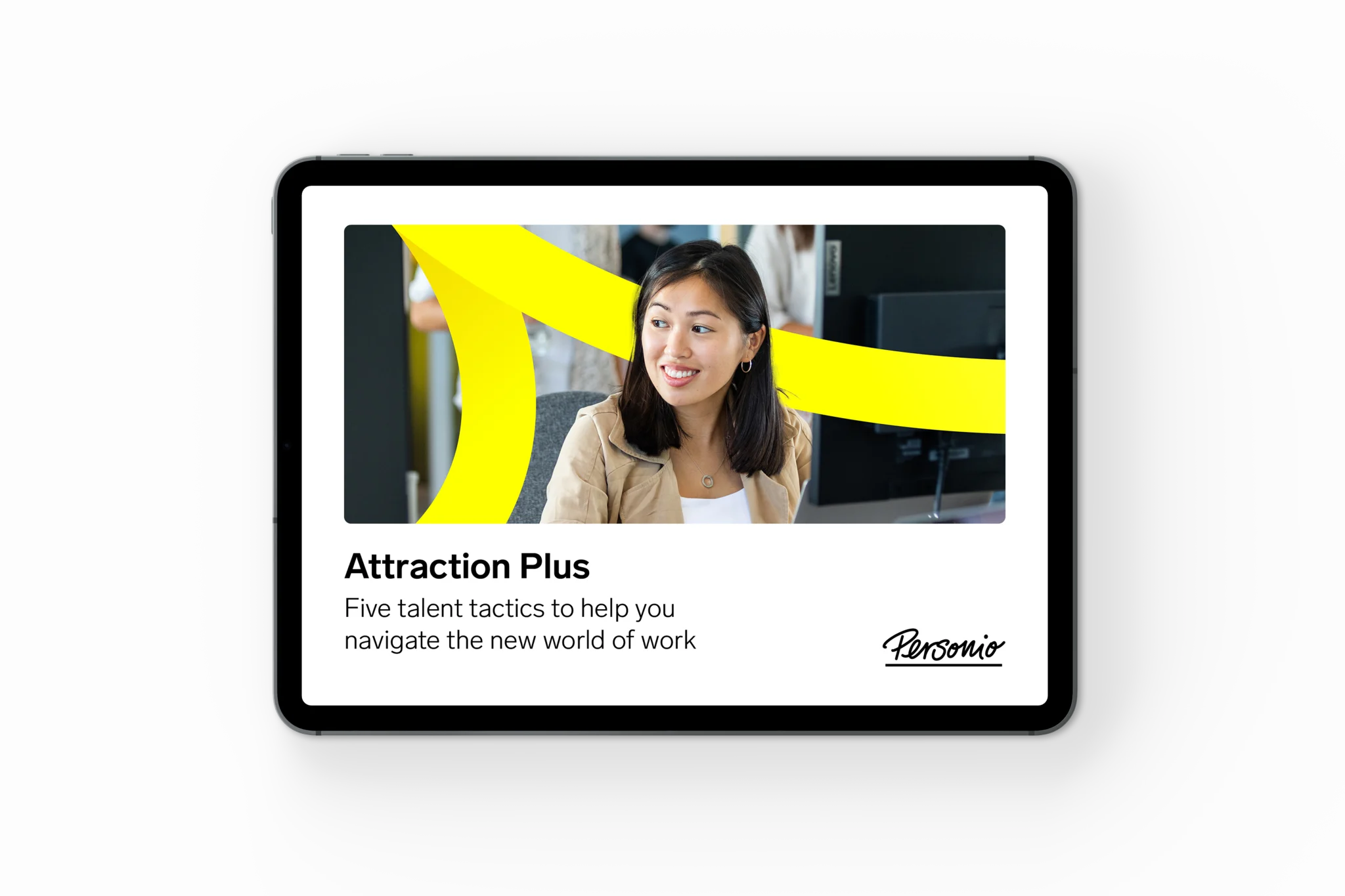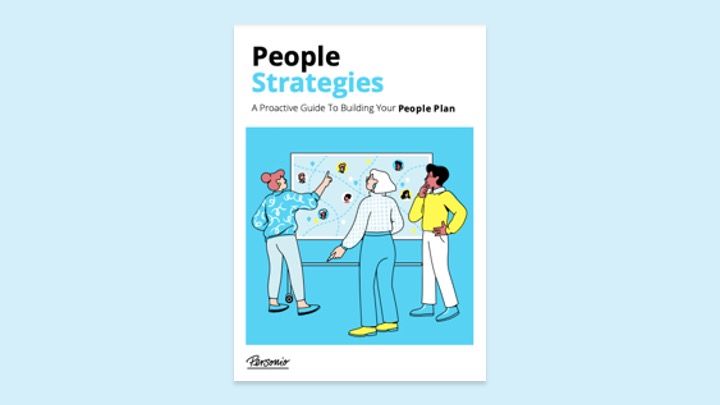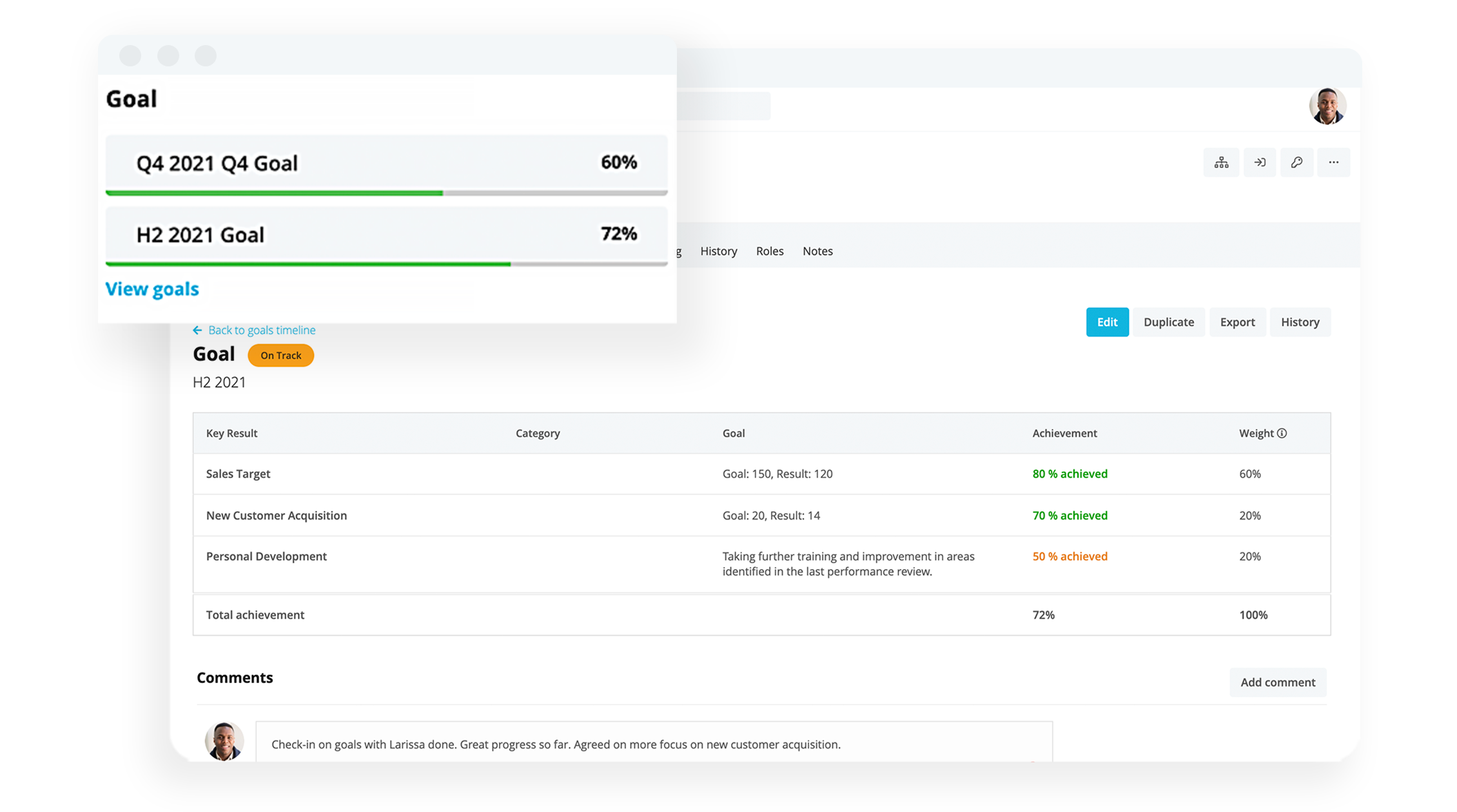Internal Mobility: A Comprehensive Guide to HR Practices

Existing employees can make the perfect candidates for new roles in your company. This process is known as internal mobility and its benefits are immense.
Below you’ll find guidance on internal mobility’s meaning, what different types exist and how implementing a good internal mobility policy can help your business.
Key facts
Internal mobility creates opportunities for your current workforce to put their talents to work in other areas of your company.
Current employees understand your company’s inner workings and can provide unique insight based on their prior experience with your organisation.
Internal mobility can take several forms, including internal promotions and cross-department opportunities.
Contents
- 1What is internal mobility?
- 2The benefits of internal mobility for businesses
- 3Different forms of internal mobility
- 4Internal mobility examples for organisations
- 5Internal mobility: Best practices for HR teams
- 6The potential challenges of internal mobility
- 7Misconceptions about internal mobility
- 8The integral role of HR for successful planning and implementation
- 9Frequently asked questions: Internal mobility
- 10Give your talent management a boost today
What is internal mobility?
Internal mobility is the practice of employees changing roles within the same company. The move may be a lateral or upward transition. It can happen within the same department or involve shifting to a new team.
Internal talent mobility can occur for many reasons. An employee may be ready to manage their own team or perhaps a role opened up that more closely aligns with the employee’s skill, professional goals or background.
The benefits of internal mobility for businesses
Prioritising internal mobility has tremendous advantages for organisations in every industry. Companies that hire internally can reap these rewards.
Financial savings
External hiring can cost more than an employee’s total salary. Around 20 to 30% of those costs are just for the fees associated with recruitment. When you hire internally, you don’t have to worry about paying for advertisements or spending valuable time conducting several rounds of interviews. Your HR team can save their bandwidth for other tasks.
Talent retention
If you want to improve your organisation’s employee retention rate, internal mobility can be a tremendous asset. Numerous studies have shown that businesses with prevalent internal hiring practices have a higher retention rate. LinkedIn reports that internal hires are 64% more likely to remain at a company for at least three years following their role transition. Employees who see an opportunity for growth are more likely to stay loyal to your company and perform well.
Job satisfaction
Professional development opportunities are one of the best ways an organisation can keep its employees engaged. Awareness of internal opportunities is an especially significant driver of overall job satisfaction. Employees want the chance to expand their abilities through on-the-job experiences and an internal job opportunity provides a great goal to work towards. Managers who emphasise employee development make their team feel supported, leading to higher overall morale and performance.
Quick transition
Training an external hire takes much longer than onboarding an internal employee to a new role. When you hire from within, your candidate is already familiar with your company’s systems, processes and culture. If an employee has been pursuing an internal opportunity, they’ve been preparing for this transition for a while, possibly with additional guidance from their manager. An internal hire is set up for success in their new role.
Different forms of internal mobility
Internal mobility occurs for multiple reasons, depending on employee and employer needs. In general, though, any internal mobility process will fall within one of the below categories.
Role-to-role mobility. This type of internal mobility represents employees who transition into a new role but remain at the same level of seniority and salary range. The new role may also closely mirror their current responsibilities. For example, a non-profit development manager who focuses on fundraising through corporate partnerships may transition to managing major gifts.
Upward mobility. Employees promoted from within your organisation are given a more senior title and often a raise in pay. A common example would be a worker moving from a director to a vice president title.
Project-based mobility. Some internal mobility may be temporary and/or partial. When special projects that require diverse skills arise, project-based mobility enables different teams to more easily collaborate. This can be a great opportunity for employees interested in upward mobility to develop relevant skills while working somewhat in their area of expertise.
Location transfer. Here, an employee’s role and responsibilities generally stay the same but they move to a different location. An employee may have requested a transfer if they are moving to a new city where their organisation also has offices. A company may also initiate a transfer if there’s a high need for additional support at a certain store or office.
Guide: Attract & Retain Top Talent

We’ve reached a new era in talent attraction and retention: Attraction Plus. Our guide shares what it means to nurture your talent at each stage of the employee life cycle.
Learn How to Boost RetentionInternal mobility examples for organisations
How do the above types of internal mobility look in practice?
Promotion
An internal promotion can involve a Director of Marketing’s promotion to Vice President of Marketing. This promotion may even set off a domino effect of internal mobility. With the Director of Marketing position now vacant, a team leader or manager can submit their resume for consideration for the newly vacant position above them.
Net new roles
As your organisation grows, you may need to create new job titles to fulfil increasing demand and client needs. Internal hires who already know your client base well are often a great fit for these positions. A growing finance department may need a controller to support their shifting finances; a staff accountant who already has experience with and knowledge of your company’s cash flow can make an excellent candidate for this new role.
Changing teams
Employees who want to broaden their experience may explore internal mobility opportunities with other departments. An engineer may want to gain more experience in quality assurance processes and take that information back with them into an engineering role. A position opening up on a QA team presents a great opportunity for that engineer.
Internal mobility: Best practices for HR teams
Thoughtful planning and preparation are key for a successful programme. Here are some of the ways you can ensure that when an internal mobility opportunity arises, your team is ready.
Implement strong talent management programmes
Opportunities for upward mobility start with strong talent development. HR teams and managers should work together to build a leadership pipeline, so capable employees have the skills they need to progress.
Provide cross-training opportunities
Give your team plenty of chances to diversify their skills. Cross-training teaches employees competencies outside of their typical job functions. If an employee expresses interest in a particular area, cross-training is a great way to keep them engaged. When internal mobility opportunities come up, whether temporary project-based or permanent openings, that employee will also be better equipped to handle the transition.
Incorporate practices into long-term strategies
Internal mobility best practices take time to prove their return on investment. It’s important to remember that internal mobility is about benefiting an organisation in the long run. Future minded actions, such as prioritising internal talent acquisition within your HR team, pay off over time.
Leverage technology to assist and automate
Certain HR software platforms are better suited for seamless internal mobility transitions. Some platforms even allow you to be proactive in identifying team members for internal mobility. This data can be especially useful during performance management cycles, especially during the planning stage when employees and managers are outlining goals.
Communicate with teams
Offering visibility into your internal mobility strategy is key to keeping employees happy and motivated. New opportunities should be promoted and conversations about internal mobility desires should be commonplace during employee check-ins. And it’s also necessary to make sure managers are well equipped to help their team members along the path to internal mobility.
Use People Strategy To Structure Career Paths

Get the support you need when it comes to career mapping and outlining the progression of roles within your organisation. Use a well-developed people strategy to build opportunities from the ground up.
Refresh Your People StrategyThe potential challenges of internal mobility
Organisations struggling to implement better internal mobility practices often face the following obstacles.
Absence of proper procedures
An organisation simply may not have the right processes or systems in place to streamline high internal mobility. This is why it’s so important to prioritise internal mobility best practices early on. It makes it much easier to identify suitable candidates when an internal mobility opportunity presents itself if you’ve already put the necessary structures in place.
Not enough qualified talent
Without strong training opportunities in place, your team may not have the skills needed for available job openings. Professional development discussions are vital to setting the appropriate benchmarks so team members are ready when future roles are vacant.
Manager hesitancy
Internal mobility has far-reaching advantages for an organisation, but leadership may occasionally be afraid to lose a good team member to another role. This stresses the necessity of transparent communication between managers and HR on internal mobility practices.
If a manager is aware of how internal mobility helps them, they’re more likely to cooperate on long-term development for their direct reports. For instance, let’s say a talented sales manager with strong technical knowledge moves to the IT team. They can assist the sales team with future IT requests faster because they know the intricacies of that team’s processes.
Misconceptions about internal mobility
While internal mobility’s benefits may seem to be widely known, some myths about this practice prevail.
Misconception #1: External hires are a better fit
Some managers assume that an external hire possesses more subject matter expertise than an existing team member. Research shows, however, that internal hires tend to perform better than external hires. No matter what outside knowledge an external candidate brings with them, it doesn’t compare to the value an internal employee brings to the table. Company culture is a much more difficult area to train in.
Misconception #2: Tests relationships between departments
Intradepartmental mobility may worry some managers because they don’t want to lose top talent. Those afraid of cross-departmental poaching should remember that internal mobility benefits the organisation’s bottom line. Additionally, that same manager may find project-based internal mobility extremely helpful when they need the insight of someone from a different department.
Misconception #3: The costs outweigh the benefits
It takes time to initiate internal mobility best practices and some may focus on the short-term costs to their time and budget. But the savings add up in the long run and the research proves it. According to the Department for Education, training new employees costs around $42 billion per year. Turnover may cost employers over £30,000 per open position.
The integral role of HR for successful planning and implementation
HR teams are a vital part of the internal mobility process. In addition to the administrative tasks that come with internal hiring, HR provides priceless insight that can simplify an internal transition. HR is responsible for knowing an organisation’s top priorities and what gaps need to be filled. They’re also essential to identifying what skills and strengths exist among current employees. As a result, HR team members are often well-suited to recommend internal employees for open roles.
Frequently asked questions: Internal mobility
What is internal and external mobility?
Internal mobility involves hiring current employees for a different role within the same business. External mobility is the process of employees moving to the next step on their career path outside of their current organisation.
What are the types of internal mobility?
The different forms of internal mobility include role-to-role mobility, in which an employee changes to a new role at the same title and pay level. Upward mobility involves an employee receiving a promotion. Transfers place employees in the same role at a different business location. Project-based mobility is a form of cross-departmental collaboration where an employee takes on new responsibilities for a limited period, based on a project’s timeline.
What is an example of an internal mobility programme?
An example of an internal mobility programme may entail a robust cross-training initiative. Companies that care about internal mobility should take time to grow their team’s holistic skillset now, so employees are ready when new roles become open. Cross-training can also be beneficial for temporary project-based internal mobility opportunities.
Give your talent management a boost today
It takes some time and effort but prioritising internal mobility best practices provides numerous benefits that lead to an organisation’s long term success.
From improving retention and morale to saving on training and recruitment costs, internal mobility is an essential facet of good talent development.
If your team is interested in strengthening its talent management practices, Personio can help. Book a demo today to see how you can help guide your team along the career path that benefits them and your organisation.
Disclaimer
We would like to inform you that the contents of our website (including any legal contributions) are for non-binding informational purposes only and does not in any way constitute legal advice. The content of this information cannot and is not intended to replace individual and binding legal advice from e.g. a lawyer that addresses your specific situation. In this respect, all information provided is without guarantee of correctness, completeness and up-to-dateness.

